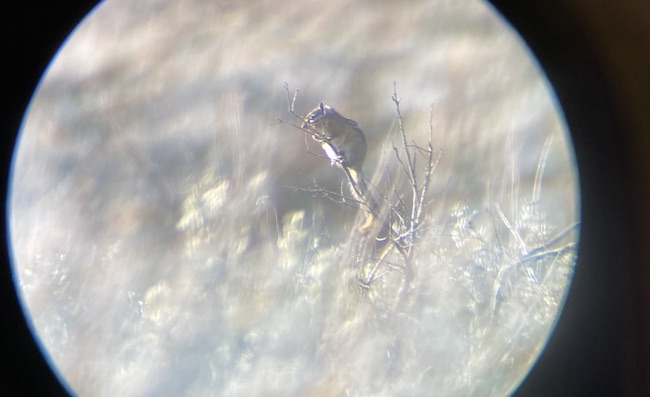BY HARRY WEEKES
It is a midmorning Sunday in April. From where I am sitting, a male harrier is making tight circles, riding hidden thermals up the canyon and over the house. Magpies are moving between the junipers, where they are building one of their fabulously chaotic stick nests, and the nearby hills. On those hills is a small herd of mule deer working north. Some kind of chipmunk frantically cruises the backyard, poking his or her head out of the stone wall before showing up atop the sage. All of this is against a backdrop of bird song—house finches, song sparrows, spotted towhees and robins. This is literally right NOW.
If I aggregate the last couple of days, I would add the increased visibility and movement of ground squirrels; accidentally following a red-tailed hawk as it cruised over Indian Creek Road to its nest in the blue spruce outside my neighbors’ house; the return of the kestrels to the nestbox at the end of the driveway; flushing gray partridges from the trees by the garage; evidence (during raking) that the voles had a pretty good year feasting on what is now the remnants of my lawn; the great and small flocks of juncos and white-crowned sparrows; moving elk; and reports from the field of bobcats, fox, and more ground squirrels.
As though to intentionally add to the now, the local red-tailed just decided to explore our little canyon, much to the chagrin of the harrier, who spent the last five minutes in swooping bombardment. The avian message was clear and received—“Occupied.”
And that’s just the animals (and only some of them).
Coming home, in the afternoon light, the catkins on our aspens literally glow with fuzz. It’s about to be “sticky season” for anyone living even close to a cottonwood tree, and from the first full dandelion flowers I have seen, to beautiful spring-green shoots coming up, well, folks, it’s about to go full send.
OK, to be fair and more accurate, it’s not “go full send” it’s just “full send.”
Our natural world is about to send it. Big time.
The Rubicon has been crossed. The boats and bridges have been burned. The hunkering down next to the pond in a driving snow and freezing temperatures and wondering if, perhaps, this year you came back just a little bit early, is over.
It is time to buzz, whistle, and sing. It is time to put on colors, shake off four months of subterranean napping, and unfurl the leaves. It is time to lose that mangy coat, give birth to the babies that have been gestating all winter, and start putting some plusses in the pounds column. Push the roots down, pop the flowers up, and pass the appetizer trays of grass stems and emerging insects.
In the Pond Skim of life, the tentative turns at the top are giving way to the tuck in the middle. If you’re going to make, it’s time to send it.
There is no better season to show that we are animals, too. Bikers, walkers, hikers, and runners emerge like the harvester ants, warmed by the sun and abuzz with activity. Lunch moves outside, and so do the toes—flipflops adding their snappy little punctuation, as if to say, “Yep, it’s spring.”
And this is what commitment looks like in the natural world. What commitment feels like. Thousands and thousands of organisms seemingly celebrating that this is a wonderful place to be, to live.
I couldn’t agree more.
Harry Weekes is the founder and head of school at The Sage School in Hailey. This is his 53rd year in the Wood River Valley, where he lives with Hilary and two mini-Dachshunds. The baby members of their flock have now become adults—Georgia and Simon are fledging in North Carolina, and Penelope is fledging in Vermont.

